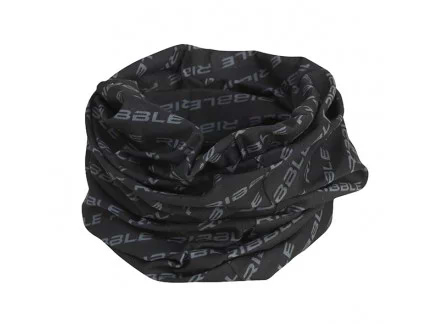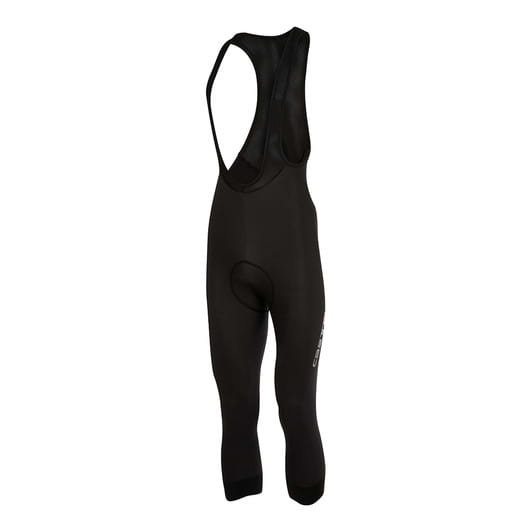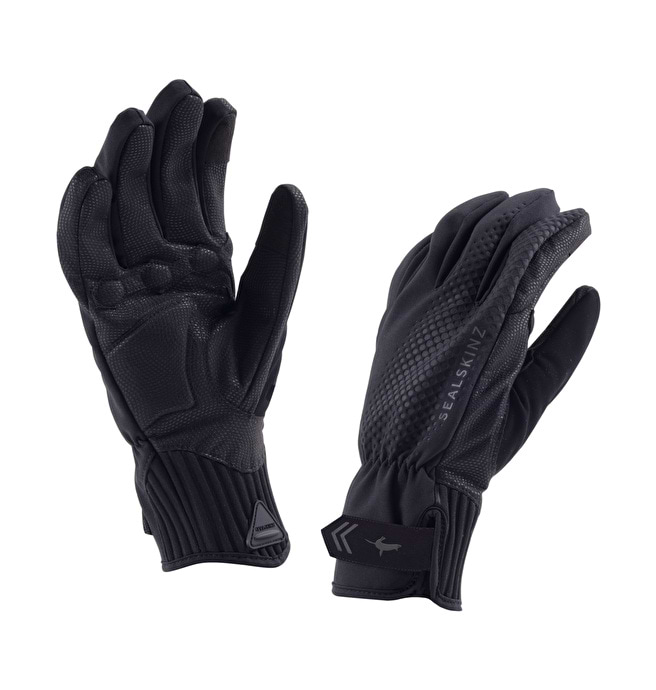Depending on your mindset, getting in the winter miles can either consist of a necessary commute in the dark or enjoying those beautifully crisp rides. There is a certain beauty to those winter morning rides when a chill permeates the air and the fields seem to shimmer and diamond-like frost is draped serenely across the landscape. In our latest blog, we offer you our recommendations for how to turn winter miles into summer smiles.
The winter survival guide
Winter riding is incredibly beneficial, especially when spring rolls around and you get to reap the rewards of that extra winter's worth of training. Here are our recommendations for the equipment you need to turn winter miles into summer smiles.
The Winter bike

Turn winter miles into summer smiles with a bike that has built-in mudguard mounts (pictured)
So, what constitutes a winter bike and why do you need one? The traditional template for the traditional winter bike is a frame made from carbon, alloy, or steel, fitted with a low-mid level drivetrain. Shimano Sora, Tiagra, or 105 are some of the most popular groupsets options for winter bikes. But why do people choose these in particular? It's often as simple as a question of cost.
During the winter months, the weather and road conditions can take their toll on a bike's drivetrain. Road grit is spread on the roads to prevent ice from forming, however, due to its makeup, it's particularly hard on drivetrains. If not washed off after every ride, it has a tendency to corrode any susceptible components.
Therefore, fitting a groupset that offers cheaper replacement parts its time to replace them is highly beneficial. However, it should also be noted that such groupsets will include components that have been constructed from cheaper materials. Because of this, you can expect them to wear out more quickly than their top-tier counterparts.
The one item that we associate with winter bikes above all others is, of course, the ubiquitous mudguard. Whether you love them or loathe them, they are incredibly beneficial for protecting both you and the bike from the corrosive effects of winter. For a slight loss of aesthetics you get the following benefits;
- You won't run the risk of being relegated to the tail-end charlie position on a club, for a lack of mudguards. After all, who wants to be the recipient of a face full of water and road detritus, courtesy of your bikes rooster tail?
- Say goodbye to that horrible feeling of cold water being sprayed over your nethers. Plus you won't be the victim of that dirty great stripe up your back that never seems to come out in the wash.
- Your feet stay drier. You wouldn't believe the sheer volume of water that is deposited onto your feet via the front wheel. You won't have to dry your shoes out everytime you arrive home or to work.
Disc or rim brakes?

The Ribble CGR family of bikes is the most versatile of all of the models in our range.
Similarly to the age-old question of which is best; Campag, SRAM, or Shimano, the subject of disc brakes vs rim brakes continues to be a divisive question. There is a clear split, with traditionalists preferring to stick to rim brakes and the rest committing to disc brakes. They each have their pro's and cons. Yet where disc brakes unquestionably have their advantages over rim brakes, is in the wet and greasy conditions that are typical of winter. When looking to purchase a bike it's a good idea to weigh up the pros and cons of each type of brake.
Pro's
- Disc brakes don't contact the wheels so you won't wear out the rims as you would with rim brakes. Disc brakes pads and rotors are cheaper to replace than wheel rims.
- They're more powerful than rim brakes. Disc brakes deliver enhanced brake modulation allowing you to brake later into corners wityh complete confidence. This is especially useful when descending and particularly in the wet.
- Wet weather braking is dramatially improved by the addition of disc brakes. Before a rim brake starts to work it first has to clear any water off the rim before it starts to 'bite'. Any grit and debris deposited on the rim or brake blocks will scour the braking surface and caus the rim to wear prematurely.
Cons
There aren't many downsides to disc brakes but the most obvious would be;
- Weight - Though manufacturer's are always working to make disc brakes lighter they are undeniably heavier than ther rim brake counterparts. This can be attributed to the extra weight of the reservoir, hoses, rotors etc. Disc wheel hubs are also slightly heavier than their rim brake equivalents. The overall weight difference is not huge by any means and can range between 200 to 500g.
- Price - The approximate price difference between a bike equipped with a hydraulic disc brake system and a rim caliper shod bike is £300. So, if you have your eye on a new bike it's worth factoring this into your budget.
- Maintenance - On a bikeequipped with rim brakes you will have to adjust the cable tension after a period to account for cable stretch. Similarly, disc brakes start to fade over time as air infiltrates the system and will require a 'bleed'. This only happens infrequently and is not something that needs to be performed often. It's then time to learn how to do this yourself or have an experienced bike mechanic service the brakes.
Tyres
Any cycle commuter will tell you that the most common time to pick up a puncture is after a deluge of rain. The excess water picks up any glass, thorns and other associated debris and deposits it into the road. Winter exacerbates this as it is, theoretically at least, the wettest part of the year. So, if you don't want to be stood at the roadside in the dark with fumbling, frozen fingers trying to locate the source of your current predicament, investing in some durable, puncture-resistant tyres is a must.
Tubeless - Tubeless tyre systems do not require an inner tube. Tubeless tyres are fitted like any traditional tyre. Where they differ, however, is that they form an airtight seal with the rim. A sealant is then inserted into the tyre before inflation. In the event of a puncture, the sealant forms a seal over the hole and prevents the tyre from deflating. Leaving you to carry on along your merry way. The other advantages of the tubeless tyre system are comfort and speed. They are run at much lower pressures which improves comfort and provide less rolling resistance for free speed.
Winter clinchers - There is an almost inexhaustible selection of clincher tyres available that provide extra puncture protection. One of the most iconic of these is Continental's Gatorskin. There is a trade-off, however, as this extra protection comes at the cost of speed. The Gatorskins do ride noticeably slower than a race tyre like the GP5000. This is because they have a higher rolling resistance. There are other great options out there if you want the holy grail of speed AND puncture resistance. Continental's own Grand Prix 4 Season or GP5000 tyres, or Michelin Pro 4 Endurance to name but a few.
Clothing
We're all different and what works for one person may not necessarily work for somebody else. In terms of how we dress during winter, most experienced road cyclists will prefer to 'layer'. This is exactly as it sounds, we will choose what to wear based upon the conditions and temperatures expected whilst out on the ride. When the temperature is near freezing it is not uncommon to have 3 layers up top (thermal undervest, long or short-sleeved jersey and some type of jacket), some decent thermal tights, under helmet insulation, gloves, and overshoes.
Jackets
There is a vast choice of jackets on the market and you have various considerations to take into account. Do you want the jacket to be waterproof, windproof, showerproof, thermal, breathable, or a mix of all of these? Does it need to be lightweight enough to fit into a back pocket or saddlebag etc?
Ribble Weldtite's HUUB jacket is windproof
- Shell jacket - This type of jacket is normally windproof and showerproof, but tends to be on the thinner side of the material spectrum. If the temperature is too low then wearing layers underneath will combat the cold and if it's wet out, then a rain cape will also be required.
- Windproof jacket (pictured above) - As its name suggests, this type of jacket offers protection from the wind and will normally cope with a light shower. There are also heavier versions available with a fleece (roubaix) fabric lining to stave off the effects of the cold.
- Waterproof / Rain jackets - There there are 2 distinct types of jacket, the lightweight (cape) or the heavier weight jacket. The heavier weight jacket tends to find favour with cyclists who prefer the relaxed fit and ride at a more leisurely pace, commuters/casual day trippers. The cape is more popular with road cyclists who value the tighter race fit.
Bibtights / Tights / Shorts / Bibknickers
Bibtights The most common garment to be worn on the lower half of the body in winter is by far the ubiquitous bib tight. Manufactured from stretchy lycra material, they often feature a fleece lining for when the temperature heads down into the low single digits. Depending upon your personal preference, you also have the option to purchase a pair with a pad pre-sewn into the crotch or buy a plain pair and wear padded shorts underneath. Many models also feature various amounts of reflective piping/panels for additional visibility during the hours of darkness.
Tights Tights are exactly the same as the bib tights above, albeit without the shoulder straps. Some may find the straps constricting so prefer the wait tight. The downside to this type of tight is that you often feel a bit more of a draught on the ack than you do with the bib variant.
Bibknickers Bibknickers are also a popular option, these are essentially 3/4 length bib tights. They stop approximately mid-cal and are a great intermediate option for autumnal or milder winter days. Bibknickers are essentially a bib tight with the lower part of the leg left bare.
Bibshorts Winter bib shorts are essentially summer shorts but with a fleece lining. Their popularity has grown in recent years as they provide the option for riders to mix and match the shorts with leg or knee warmers.
Arms/ Knees/ Leg warmers Arms, legs and knee warmers are a fantastic option for those who prefer to layer. Their popularity stems from the added flexibility that they offer. You can wear them when the temperatures are a little cooler and then remove them when it warms up. Being quite a minimalist design, it's also easy to stuff them in a pocket or saddlebag when not required.
Gloves
The extremities always suffer during the cold winter months. The hands and feet, in particular, need adequate protection. Good quality gloves are an absolute necessity, and if you live in an area that is subject to freezing temperatures more than 1 pair may be required. Liner gloves beneath the outer gloves may also be required. Here in Lancashire, we have been known to wear 2-3 pairs to stave off the dreaded pain as the blood flows back into frozen hands!
Overshoes
Nobody likes wet feet or, even worse, cold and wet feet! A good pair of overshoes are worth their weight in Gold. Choose the right overshoes to suit the conditions and temperatures that you expect to ride in. Most overshoes will have reflective piping and/or logo's to announce your presence when riding in the dark. As they are constantly in motion the legs and feet, in particular, are extremely visible in car headlights when encased in reflective. Again there are various types of footwear and each offers something a little different.
- Roubaix overshoes are booties (oversocks) that fit over your shoes and keep your feet toastie warm. However, they offer little to no protection from rain or standing water.
- Many waterproof overshoes are generally on the thinner side and offer limited thermal properties. There are also versions available that have a fleece lining to improve their little pinkie warming capabilites.
- Neoprene overshoes tend to be the most popular option as the fabric has great thermal properties (hence diving suits being manufactured from the material). They also provide great wet weather protection.
Headwear
Keeping your head toasty warm and, most especially, your ears is definitely a good idea. The most popular winter headwear items are,
- Buffs - This versatile gem can be used as a neck warmer, headband, or atop the head as a skull cap. You can even use two of them in tandem, one around the neck and pulled up over the nostrils (not the eyes though!) and one atop the bone dome.
- Skull caps / beanies - It's hard to discern the difference between a skull cap and beanie. They are an under helmet cover for your head.
- Hat/Neck Warmer - Essentially the same as the buff but they are made from a thicker Roubaix material and will normally have a drawstring with a toggle at one end. If you pull the drawstring and adjust the toggle it transforms from a neck warmer into a hat. The drawback of this design is that they cannot be worn under a helmet.

The skull cap is designed to fit under the helmet.

The versatile 'buff' functions as a neck warmer, skull cap, scrunchie and bandana.
Baselayers
Base layers are a key part of the layering system. There are a few different variants;
- Coolmax: Highly breathable, they wick sweat away from the skin which makes them ideal for spring/summer use.
- Thermal: Thermal vests are designed for winter riding and are crucial for keeping the core warm but at the sme time wicking sweat away from the torso. Typically manufactured form manmade fibres they can become a trifle smelly unless you wash them frequently.
- Merino: A natural wool fibre, Merino is incredibly odor resistant. This makes them an extremely popular option for those hardy winter cyclists.
On the lookout for a good winter bike? The CGR 725 is a perfect winter bike and Oli our Clitheroe Store Manager gives his verdict on his test ride. Read it here.
Commuting to work by bike is a great way to save money and improve your physical and mental wellbeing. Ribble staffers share their top tips to simplify your daily commutes.
Iain commutes to work by bike whether it rains or shines. Here he tells us what it is about cycling that makes him venture out in all weathers.
Tags
- | guides
- | winter bikes
- | winter cycling
- | winter training
- | winter






